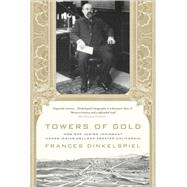
What is included with this book?
FRANCES DINKELSPIEL is an award-winning journalist and the great-great granddaughter of Isaias Hellman. Her work has appeared in The New York Times, People, San Francisco Magazine, San Jose Mercury News, and other venues. She lives in Berkeley, California.
| The Hellman Family Tree | p. vii |
| Introduction | p. 1 |
| Panic | p. 7 |
| New Names, New Lives | p. 12 |
| Coming to Los Angeles | p. 24 |
| A Safe and a Dream | p. 35 |
| Marriage | p. 52 |
| The Farmers and Merchants Bank | p. 65 |
| The Railroad | p. 76 |
| Prosperity | p. 98 |
| Transformation | p. 124 |
| The Nevada Bank | p. 135 |
| A Death Threat | p. 169 |
| Trolleys and Water | p. 185 |
| Betrayal | p. 206 |
| Wells Fargo | p. 227 |
| Earthquake and Fire | p. 240 |
| Graft and Cash | p. 263 |
| Change | p. 285 |
| War and Anti-Semitism | p. 302 |
| The Light Fades | p. 318 |
| Epilogue | p. 327 |
| Acknowledgments | p. 337 |
| Notes | p. 341 |
| Bibliography | p. 355 |
| Index | p. 361 |
| Table of Contents provided by Ingram. All Rights Reserved. |
The New copy of this book will include any supplemental materials advertised. Please check the title of the book to determine if it should include any access cards, study guides, lab manuals, CDs, etc.
The Used, Rental and eBook copies of this book are not guaranteed to include any supplemental materials. Typically, only the book itself is included. This is true even if the title states it includes any access cards, study guides, lab manuals, CDs, etc.